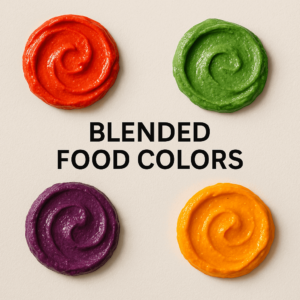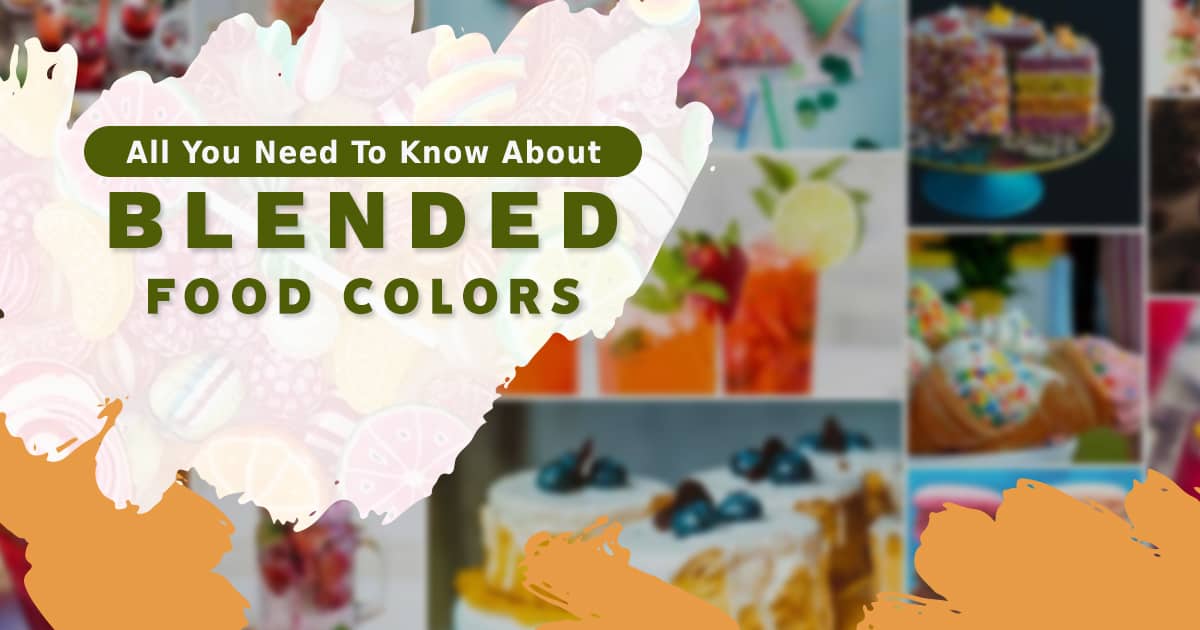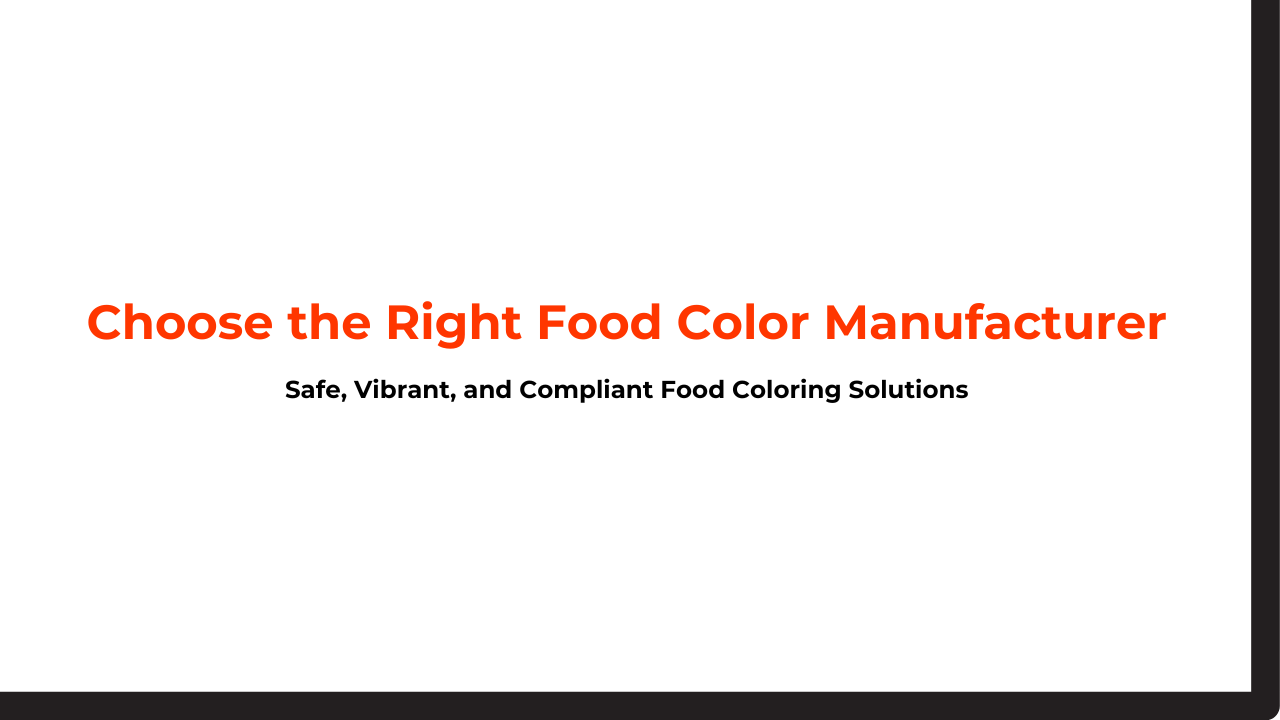Introduction
Color plays a crucial role in how we perceive and enjoy food. A visually appealing dish can stimulate appetite and enhance the overall eating experience.
From rich reds in sauces to soft pastels in desserts, food colors are more than just aesthetic—they influence expectations, taste perception, and even purchasing decisions.
Among the many innovations in this field, blended food colors have emerged as a versatile and dynamic solution for food manufacturers and culinary artists alike.
What Are Blended Food Colors?
Blended food colors combine two or more food-safe colorants carefully mixed to create a specific shade or hue. Unlike single-color additives, manufacturers design these blends to provide precise, consistent, and vibrant color results that are difficult to achieve with individual colorants alone.
Manufacturers may derive blended food colors from natural or synthetic sources and carefully formulate them to meet the unique requirements of different food products.
For instance, a blend might combine yellow and red to produce a warm orange ideal for baked goods or snacks. The goal is to achieve better color stability, improved visual appeal, and greater flexibility in formulation.

Types of Blended Food Colors
Blended food colors are generally categorized based on their source and application. The main types include:
- Natural Blends: Made from plant, fruit, or mineral extracts (like beetroot, turmeric, or spirulina). These are popular in clean-label and organic products.
- Synthetic Blends: Created from certified artificial dyes. Manufacturers value them for their intense color payoff and stability.
- Custom/Commercial Blends: Developed by manufacturers to match brand requirements or specific consumer preferences.
Each type offers distinct advantages, and the choice often depends on the desired shade, food matrix, and regulatory guidelines.
How do manufacturers make blended food colors?
Creating a blended food color is both an art and a science. Manufacturers consider several factors during formulation:
- Color Fit: Select base colors that blend well without causing unpleasant shades.
- Stability: Ensuring the blend resists fading when exposed to heat, light, or changes in pH.
- Solubility: For optimal performance, the blend must align with the specific characteristics of the food product, whether it is fat-based (such as chocolate) or water-based (such as beverages).
- Technology: Manufacturers often use precision mixing, protective layering, and smooth mixture techniques to achieve evenness and maximize performance.
The process requires careful testing and quality control to ensure that the final blend delivers the intended visual effect in real-world applications.
Applications of Blended Food Colors
Food and beverage manufacturers widely use blended food colors across various sectors:
- Bakery & Candies: For icings, candies, and cakes, vibrant and unique shades are key.
- Beverages: Smoothies, sodas, and juices benefit from consistent color tones that don’t separate or fade.
- Dairy Products: Yogurts and flavored milk often use subtle, pastel blends for an appealing look.
- Savory Foods: Soups, sauces, and snack coatings use blends to replicate natural cooking colors or enhance visual richness.
In each case, the color must perform under specific conditions without affecting the taste or texture of the product.
Advantages of Using Blended Food Colors
The growing popularity of blended food colors reflects their numerous benefits.:
- Enhanced Vibrancy: Complex shades that pop and maintain their appearance throughout shelf life.
- Consistency: Consistency across batches is essential for brand recognition.
- Personalization: Brands can craft signature shades that align with their identity.
- Efficiency: Instead of using multiple individual colors, blends simplify the formulation process.
These advantages make blends a go-to choice for companies aiming for both performance and visual appeal.
Trends in Blended Food Colors
The landscape of food coloring is rapidly evolving, and blended options are at the forefront of several key trends:
- Clean Label Movement: Consumers are seeking natural and transparent ingredient lists. This has driven demand for natural, blended food colors derived from vegetables, fruits, and herbs.
- Plant-Based Boom: As more people embrace plant-based diets, the demand for vegan-friendly and non-synthetic colors is rising.
- Social Media Influence: Aesthetically pleasing, “Instagrammable” foods are trending. Blended colors help brands create visually striking products that stand out.
Innovation in color technology meets these demands by creating stable, natural, and brilliant blends suitable for various diets and lifestyles.
Tips for Choosing the Right Blended Food Colors
Selecting the right blend isn’t just about choosing a color—it involves thoughtful planning:
- Match to Product Matrix: Understand whether the food is water- or fat-based to choose a compatible blend.
- Check Shelf-Life Requirements: Choose stable blends throughout the product’s life cycle.
- Ensure Regulatory Compliance: Different regions have different guidelines for food color usage, especially for natural sources.
- Test in Real Conditions: Always test blends under actual production conditions (e.g., baking, refrigeration) to ensure performance.
These tips help avoid common pitfalls and ensure the final product meets quality and regulatory standards.
Read More: How to Choose the Right Food Color
Conclusion
Blended food colors offer a vibrant, flexible, and effective way to enhance the appearance of food and beverages.
Whether you’re aiming for natural pastels in plant-based yogurts or bold, eye-catching shades in confectionery, these custom formulations provide endless creative possibilities.
As consumers demand cleaner labels and more personalized products, food manufacturers make blended colors a key part of food innovation. For businesses and food developers, embracing this colorful trend could be the key to standing out in a competitive market.




